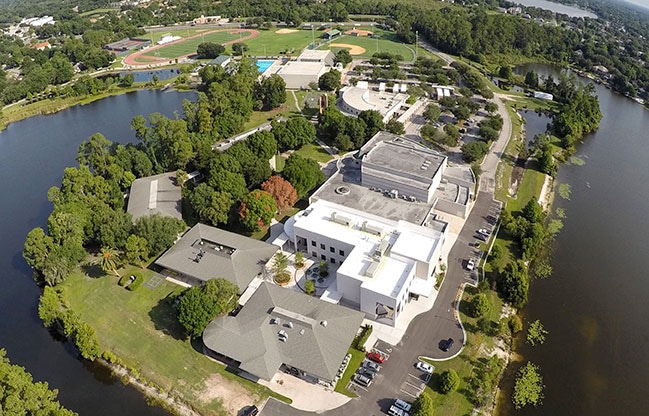
by Beth Kassab | Mar 5, 2024 | News, Uncategorized, Zoning and Development
Trinity Prep wins approval to expand, build science building
Seminole County commissioners removed a cap on Trinity Prep student enrollment, but Orange County’s cap still applies
This article was provided in partnership with nonprofit, independent newsroom Oviedo Community News.
March 5, 2024
By Abe Aboraya
The Seminole County Commission unanimously approved an expansion at Trinity Preparatory School last week.
Trinity Prep is on 90 acres of land at the south side of Aloma Avenue just west of where it meets Tuskawilla Road, with the property straddling both Seminole County and Orange County. The Commission gave approval to build a two-story, 30,000-square-foot science building on the forested northeastern end of the school’s property.
Commissioners asked about an enrollment cap at the school. Orange County caps their enrollment at 888 students, and Seminole County wanted to increase the cap to 1,200 students. School officials said they wanted the ability to eventually expand enrollment without having to come back to the county for approvals.
“The cap inhibits us in terms of growth,” Trinity Prep Headmaster Byron Lawson said to commissioners.
He said the school would like to expand, especially with the younger grade levels. “But I also understand where I live, and we want to take this next step with the county to provide a great education for the kids we have now.”
Ultimately, Commissioner Bob Dallari made a motion to approve the school expansion – and completely eliminate the cap.
“I just want to make sure we’re treating the applicant fairly,” Dallari said.
Now, if Trinity Prep wants to increase its enrollment, it would still need to get approval from Orange County.
Additionally, Seminole County Commissioners:
- Awarded a $2.9 million contract to Oviedo-based Ovation Construction Company Inc. to build Phase II to replace a wastewater processing plant equipment at Yankee Lake. The facility is off of State Road 46 in Sanford. Separately, the county also gave early approval to a $3.8 million project to recharge the aquifer through a well at Yankee Lake.
- Signed off on $13.5 million tax exempt bonds being issued to help pay for construction of affordable housing in Sanford. Riverbend Landings Partners plans to build an 89-unit development off of State Road 46 in Sanford. A key detail: 20% of the units would be for residents earning 50% of the median income of the area.
© 2022 Oviedo Community News. Used with permission. To learn more about the nonprofit newsroom covering Greater Oviedo & Winter Springs and subscribe to free e-news, visit OviedoCommunityNews.org.
To comment or read comments from others, click here →
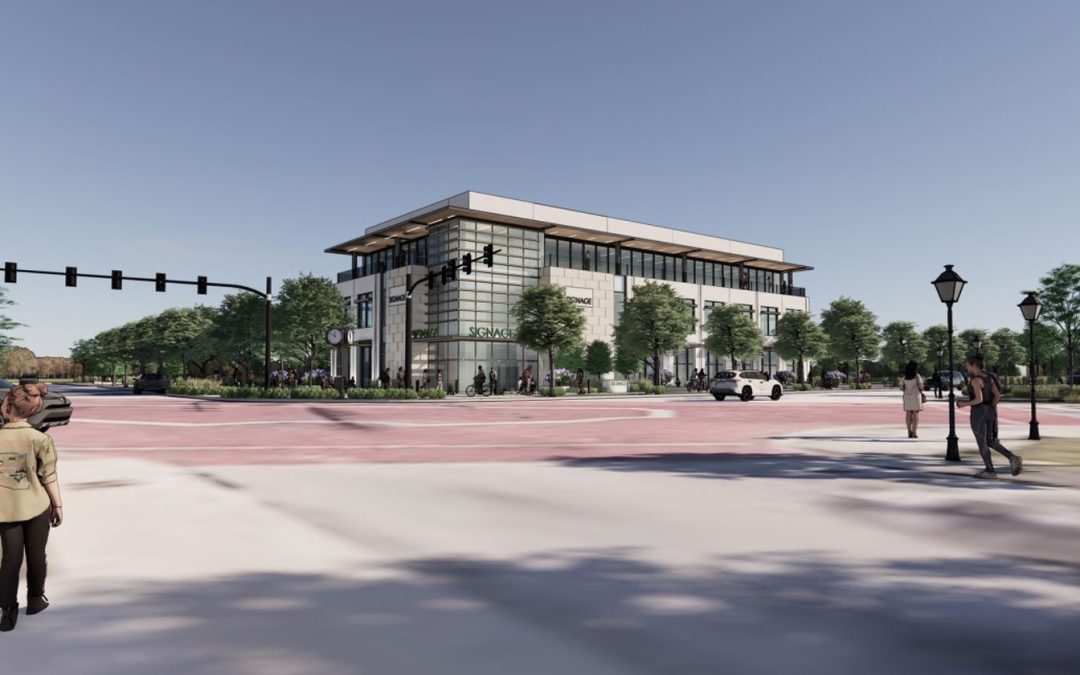
by Beth Kassab | Feb 28, 2024 | City Commission, News, Orange Avenue Overlay, Zoning and Development
After last minute change, commission unanimously approves McCraney building
The three-story development, which is the first approved in Orange Avenue Overlay, will provide offices and some other use such as a small restaurant or furniture store
Feb. 28, 2024
By Beth Kassab
The City Commission unanimously approved a three-story building of mostly offices on Wednesday at the six-way intersection of Orange and Minnesota avenues and Denning Drive.
Developer Steve McCraney’s project is the first to be approved under the Orange Avenue Overlay, which sets the tone and density for redevelopment along the corridor between Rollins College and U.S. 17-92.
The Commission appeared poised to deny the project with three commissioners — Vice Mayor Sheila DeCiccio and commissioners Todd Weaver and Marty Sullivan — saying they could not vote in favor of it because the building would only contain offices rather than mixed uses as the city code requires.
DeCiccio said she was concerned that allowing the departure from code would set a precedent for other developments that would undermine the vision for the area.
“If we capitulate to you on this issue the entire OAO is out,” she said. “We will be open to endless lawsuits for those who do not get their way.”
About three hours into the discussion, Mayor Phil Anderson called for a break. When the meeting resumed about 20 minutes later, McCraney attorney Becky Wilson offered that at least 25% of the building would include other uses such as a less than 12-seat restaurant, furniture store, personal service provider such as a fitness center or salon.
After that, all five commissioners approved the project.
A number of residents spoke passionately for and against the development.
Anderson said he considered it a “win-win” because McCraney could have built a much larger building on the property. He also noted the previous version of the Orange Avenue Overlay put in place by a different commission five years ago would have yielded a much different result.
“Five years ago, the prior commission had a very different vision,” he said. “The buildings would have been three to four times the size allowed now.”
WinterParkVoiceEditor@gmail.com
To comment or read comments from others, click here →
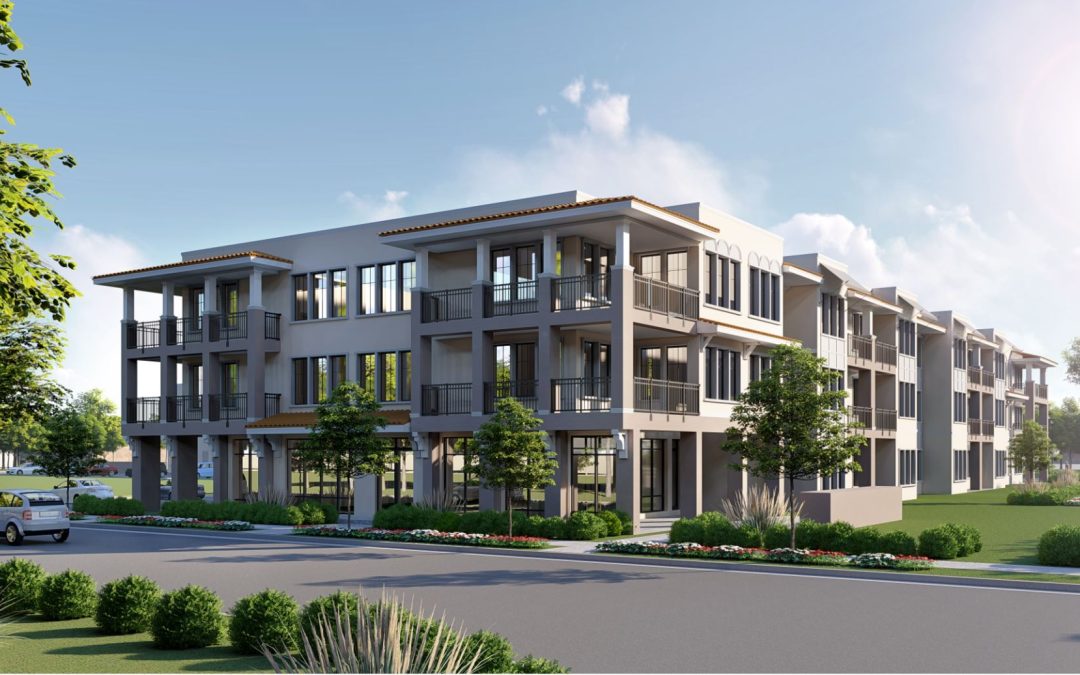
by Beth Kassab | Feb 28, 2024 | City Commission, News, Uncategorized, Zoning and Development
Rollins presses pause on request for faculty apartments
The controversial project, which would have provided accessible housing to faculty and staff near the liberal arts campus, drew criticism from neighbors
Feb. 28, 2024
By Beth Kassab
Rollins College withdrew its request to build faculty apartments a few blocks from Park Avenue after an outcry from neighbors and concerns from commissioners that the building wouldn’t fit in the neighborhood.
“College leadership has talked with each commissioner over the past several weeks, seeking input and feedback on accommodations while striving to preserve the integrity of the project,” Rollins administrators said in a statement. “This project remains a strategic priority of the college. We will take time to explore our options and come back with a project that benefits the College and the City’s Central Business District.”
President Grant Cornwell has said the college needs to be able to offer attainable housing to recruit younger faculty because housing prices in Winter Park are often $1 million or more.
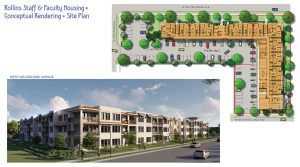
A rendering shows a faculty and staff apartment project proposed by Rollins College.
Workforce housing and affordable housing are often thrown around as priorities of the City Commission, particularly in the context of expanding the city’s Community Redevelopment Agency.
But the Rollins project quickly became a target for neighbors to shoot down, asserting the building would decrease their property values.
In January, Rollins attempted to appease some of those concerns by lowering the number of proposed units from 48 to 39 and reducing the size and length of the building along Welbourne Avenue.
The proposal was for a three-story 72,933-square-foot building with 104 parking spaces, which meets code requirements, according to a memorandum from city staff.
A number of residents of the Douglas Grand condominium building said they feared their own units will drop in value because of Rollins’ planned framed construction with what they called too few architectural details to emulate the Spanish-Mediterranean style the main campus is known for.
“Please consider whether or not you would purchase a $1 million residence across the street from what would be at best an average maintained, subsidized apartment complex,” read one email to commissioners from a resident.
“It is the appearance of the rental facility that makes it even more distasteful,” read another.
“Not to sound snotty, but this is the type of apartment better suited for cities like Fern Park or Casselberry,” a resident wrote.
In it’s statement, Rollins did not say when it expected to try again to seek approval for the project, but signaled it would do so eventually.
“We remain committed to ongoing dialogue with commissioners as we continue to refine the proposal,” the statement said. “We are grateful to the many Winter Park residents and community members who have shown support for this initiative aimed at addressing the college’s workforce housing needs.”
WinterParkVoiceEditor@gmail.com
To comment or read comments from others, click here →

by Beth Kassab | Feb 24, 2024 | City Commission, News, Orange Avenue Overlay, Uncategorized, Zoning and Development
News & Notes: Rollins apartments, McCraney property and leaf blowers
The developer of the first new building in the Orange Avenue Overlay is bringing significant changes back to the City Commission for consideration
Feb. 24, 2024
By Beth Kassab
The City Commission on Wednesday will hear a list of proposed changes for the three-story office building slated to be developed next to Seven Oaks Park along Orange Avenue.
The changes are the result of a lengthy public hearing two weeks ago during which a number of residents spoke both for and against the building.
Commissioners criticized the building’s height, which exceeded the limit, as well as its single-use purpose as an office building among other concerns.
Since then, Steve McCraney, the developer who wants to use the building, in part, as his corporate headquarters, has submitted the following changes:
- The building will no longer be used exclusively for offices and now will be a mixed-use project. The other uses proposed weren’t immediately clear.
- The building’s architecture has been updated (see rendering above).
- The screen wall on the roof of the building intended to shield the air-conditioning unit and other equipment from view will now be shorter.
- The green space planned in front of the building along Minnesota and Denning is adjusted, though the building will still provide more than the required number of parking spaces in the back.
After a first hearing, which didn’t require a vote on Feb. 14, commissioners are expected to take a vote on the project after the second hearing on Wednesday.
Rollins seeks approval for apartments
The liberal arts college that has helped define central Winter Park is expected to come back to the board for approval of new faculty apartments after pausing its request earlier this month.
Neighbors and commissioners have asserted the plan, which is intended to provide attainable housing close to campus exclusively for Rollins faculty and staff, doesn’t fit with the neighborhood and will decrease property values.
At the end of January, Rollins attempted to appease some concerns by lowering the number of units from 48 to 39 and reducing the size and length of the building along Welbourne Avenue.
The proposal is now for a three-story 72,933-square-foot building with 104 parking spaces, which meets code requirements, according to a memorandum from city staff.
Will residents vote on leaf blower ban?
In what has proven to be just as explosive of a topic as development in Winter Park, Commissioners could take a step this week in quieting — once and for all — the noise over leaf blowers.
Commissioners are expected on Wednesday to vote on an ordinance that could allow voters to decide if gas-powered leaf blowers should be banned.
The ordinance comes after Sen. Jason Brodeur threatened to pass a law to prohibit Winter Park and other cities from enforcing their own rules on the matter.
Brodeur demanded the city delay implementing the ordinance, which was originally passed on Jan. 12, 2022, until June 1, 2025, which would allow voters to first have a say on the March 11, 2025 ballot. Voters would be asked whether the gas powered devices, which many consider a nuisance both as noisemakers and air pollutants, should be banned.
Commissioners are expected to vote on doing just that. At the last meeting, Marty Sullivan and Todd Weaver signaled they were against meeting the senator’s demands while Phil Anderson and Kris Cruzada said they were open to it. Sheila DeCiccio, who is running for mayor in the March 19 election, is expected to be the swing vote.
WinterParkVoiceEditor@gmail.com
To comment or read comments from others, click here →
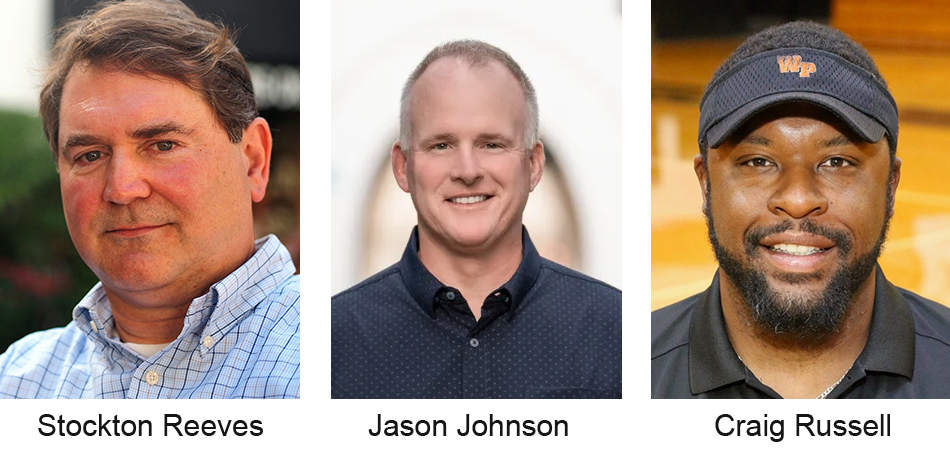
by Beth Kassab | Feb 23, 2024 | City Commission, Election, News, Uncategorized, Zoning and Development
Seat 2 campaigns intensify over development, public safety claims
The three-way race appears focused on one of Winter Park’s most asked questions: How will growth look in the future?
Feb. 22, 2024
By Beth Kassab
Election mailers and the accusations that come along with them are flying in Winter Park as three candidates compete for the seat on the City Commission vacated by Sheila DeCiccio, who is running for mayor.
The issue taking the most attention? Growth and development — Winter Park’s perennial dog fight.
At stake is how Orange and Fairbanks avenues as well as U.S. 17-92 look over time as major property owners begin to redevelop their land along with continuing redevelopment across the city’s western neighborhoods.
The person who is elected to the open seat will likely have significant influence over those projects and two of the candidates, Jason Johnson and Craig Russell, are clearly differentiating themselves on the matter. A third candidate, Stockton Reeves, appears to be focusing on taxes and inflation as well as claims about public safety.
A mailer to residents from the Winter Park Chamber of Commerce’s Political Action Committee somewhat crystalizes what is emerging as a defining issue in the race: Whether development codes should be more lenient.
“Did you know?” the mailer asks is large type. “Park Avenue would be prohibited from being built today under current city code.”
The mailer goes on to say that the code “blocks Winter Park’s iconic charm from enhancing other parts of the city.”
The chamber endorsed Russell, a teacher and coach at Winter Park High School, who was the only candidate at the chamber election forum who said he was open to revisiting the original Orange Avenue Overlay rules that allow for taller buildings and higher density. Those rules were overturned by the City Commission in 2020 and the city won a lawsuit filed by major property holders over that decision.
Russell is also the only candidate who said he was open to the chamber’s proposal to do away with the city’s parking codes that require developers provide a certain number of spaces based on the type of development.
“Current codes limit commercial land owners from creating new mixed use venues of a similar size and aesthetic to Park Avenue because of the onerous and outdated parking requirements,” Betsy Gardner, chamber president and CEO, said in a statement. “Small concessions have been made over time for tenants in the Central Business District, but any new development in the city faces parking mandates that leave businesses overparked, creating empty lots, visual blight and a less walkable and more car-centric environment.”
Russell, who did not respond to a request for comment, has said at previous public forums that he would “listen to the experts” for guidance on growth and development issues. One recent mailer from Russell’s own campaign said he wants to “promote smart growth, opposing irresponsible high-density developments.”
Johnson, who opposes tossing out parking codes and emphatically said he did not agree with returning to the original OAO rules, questioned whether Russell would speak for residents or business interests when it comes to new development.
“The comment about ‘listening to the experts’ is a deflection and a way of saying if an expert comes in on behalf of a developer and says something, we should just listen to that rather than what the residents think,” he said.
Johnson, an attorney who has made maintaining Winter Park’s charm a central element of his campaign, sent out an email to voters this week that emphasized, “I am NOT endorsed by the Winter Park Chamber’s PAC, which endorsed a candidate who supports development of large out-of-scale buildings near Park Avenue, and doing away with parking requirements for future commercial developments.”
Reeves, who did not show up at the public candidate forums, has sent at least eight mailers to voters so far — the most of the three candidates.
One of his pieces exclaims “higher prices and inflation aren’t the only things out of control” and says “our property taxes are going up too!” He accused the commission of increasing taxes by 7% in 2022 and nearly 9% in 2023.
His claims are based on the idea that commissioners could have adopted the “rollback rate” or lowered the city’s milage rate to collect the same tax revenue as was collected the prior year.
Instead, commissioners kept the tax rate the same, but collected more taxes because property values have increased. That means each property owner paid a higher assessment based on their increased value.
During budget meetings last year, commissioners noted the need to increase police and fire budgets as inflation and other factors, have driven up wages and equipment costs. Police and fire make up the largest portion of the city’s general fund expenses followed by parks and public works.
In a separate mailer, Reeves asks “Quick question – How many ambulances does Winter Park have for over 30,000 resident?”
“It is shocking to me that we only have 2 full-time ambulances,” the piece stated.
City officials said a third ambulance is already being staffed part-time and that is set to increase over the coming year.
“Winter Park Fire Department uses the ‘right-sized’ approach, which has proven world-class and credible as WPFD is five-times fire accredited and four-times EMS accredited,” said a statement from the department. “We have already phased in a third rescue/ambulance at Station 64 during select periods. This will continue with the adoption of the [2025] budget, which already includes the hiring of additional personnel.”
Reeves told the Voice that staffing the third ambulance should happen sooner, “I am not satisfied with this and believe it should be staffed full time.”
But considering Reeves also says he supports adopting a rollback tax rate and wants to collect less revenue for the city, it’s unclear where he would find the money to continue to keep up with the costs of public safety.
He did not respond to a question from the Voice seeking details of his plan.
WinterParkVoiceEditor@gmail.com
To comment or read comments from others, click here →

by Beth Kassab | Feb 10, 2024 | City Commission, News, Orange Avenue Overlay, Uncategorized, Zoning and Development
News & Notes: What's happening with Rollins apartments and more
Plus Super Bowl Sunday and the latest on the McCraney office tower
Feb. 11, 2024
By Beth Kassab
First, it’s Super Bowl Sunday and we all expect Winter Park-adjacent resident Donna Kelce (she lives in Baldwin Park) will be in attendance to cheer on Taylor Swift’s boyfriend (also known as her son, the Kansas City Chief’s Travis Kelce).
Could it be just a coincidence that only months after Donna Kelce posted a big shout out to Winter Park and the city’s famous boat tour that Swift announced there will be a song titled “Florida!!!” on her new album “The Tortured Poets Department” set to release in April?
Yes. It is definitely a coincidence. The song is most certainly not about that. But a city can dream, right?
On to a look ahead for the week:
Rollins proposal for faculty apartments
For those looking to speak for or against the plan by Rollins College to build faculty housing, you’ll have to wait a few extra weeks. The proposal was on Wednesday’s agenda, but has been postponed at the request of the college until Feb. 28.
At the last meeting, Rollins reduced the number of units it plans to build from 48 to 39 and the city postponed a decision on the matter that residents have complained won’t fit in with the surrounding area along New England Avenue.
McCraney Property next to Seven Oaks Park
After an initially chilly reception, members of the Planning & Zoning Board unanimously approved a proposal for a three-story, 29,500-square-foot office tower at 1100 Orange Avenue next to where Seven Oaks Park is underway.
Now the City Commission is set to consider the project on Wednesday. The Orange Avenue Overlay board approved the concept last month. 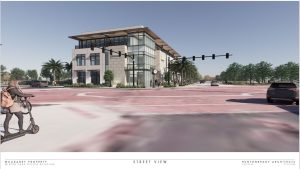
Steve McCraney, who is planning to building the space for his development company’s corporate headquarters, made changes to the original plans and is now offering right-of-way to the city that could be used in the future for a traffic roundabout on Orange Avenue.
“In order for a roundabout to actually be realized at this corner, there will be a much larger and timely community discussion, but this trade-off ensures that the City is not missing an opportunity for the roundabout,” according to a staff memorandum on the project. “Furthermore, the immediate effect of this right-of-way dedication, is a much larger setback than what was previously proposed, which helps reduce the impact of this three-story building at this corner.”
WinterParkVoiceEditor@gmail.com
To comment or read comments from others, click here →

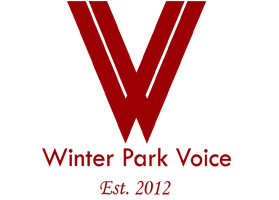






Recent Comments